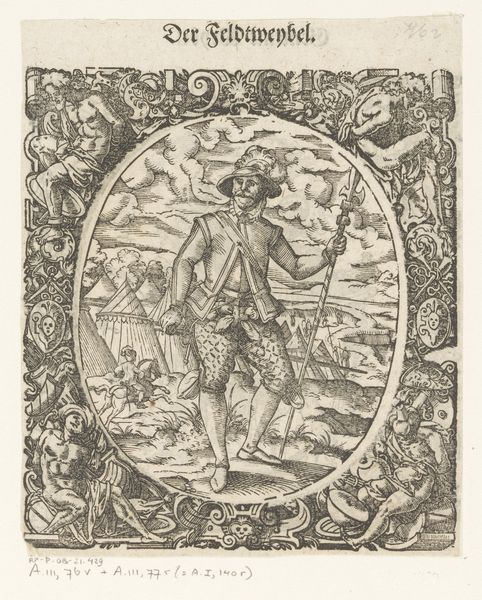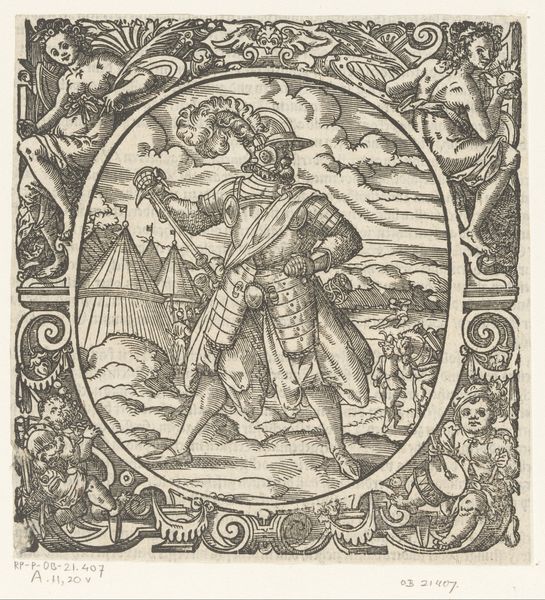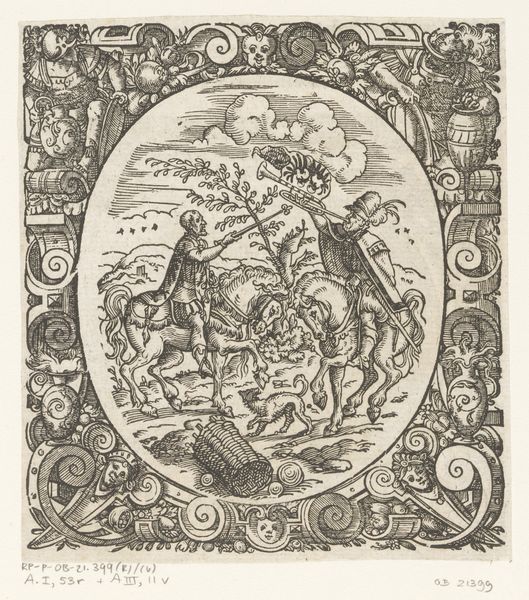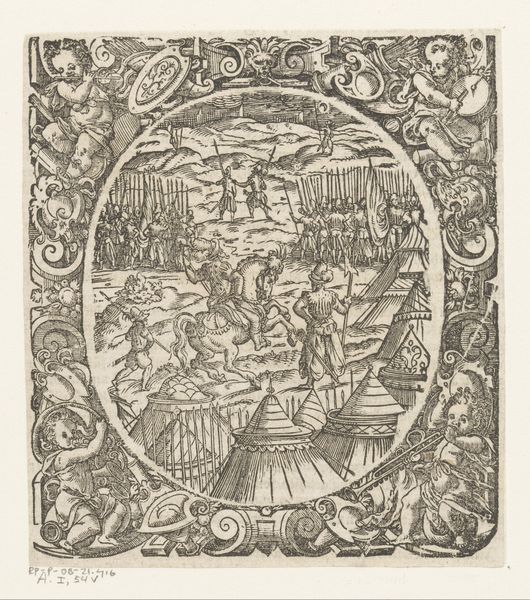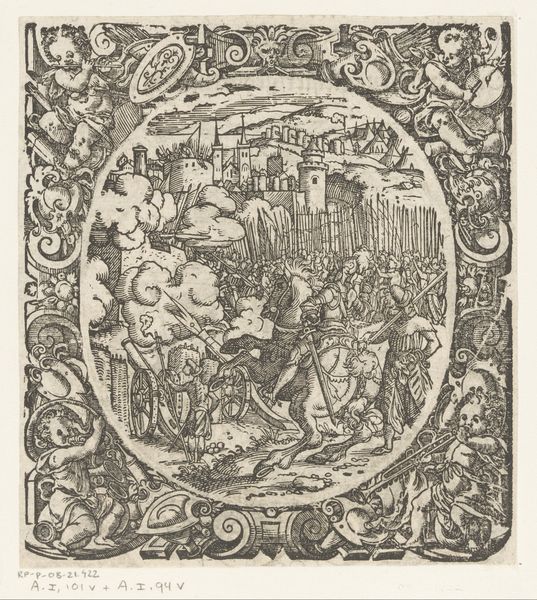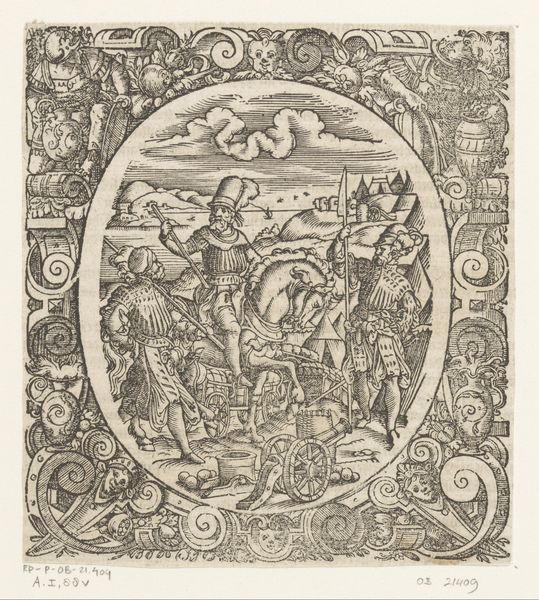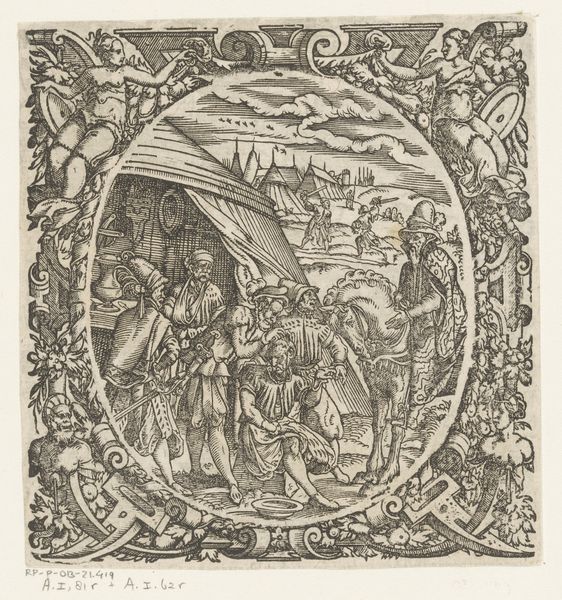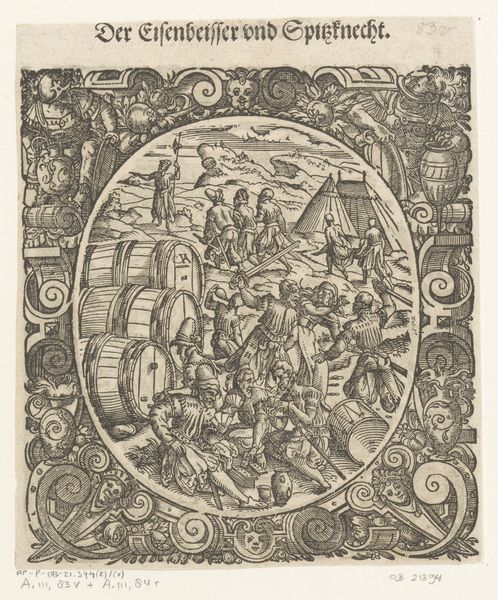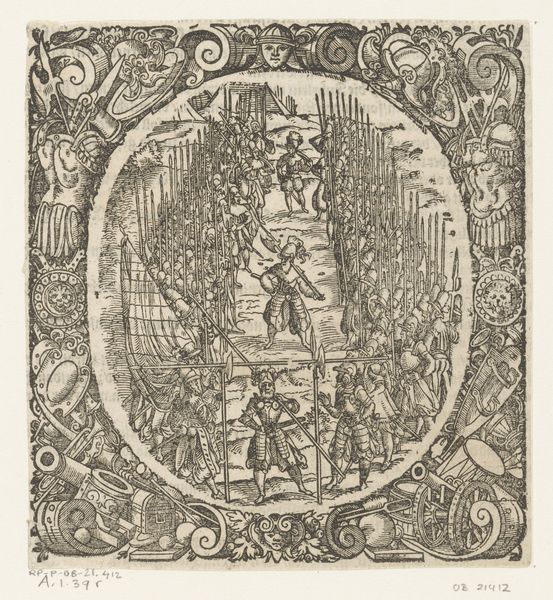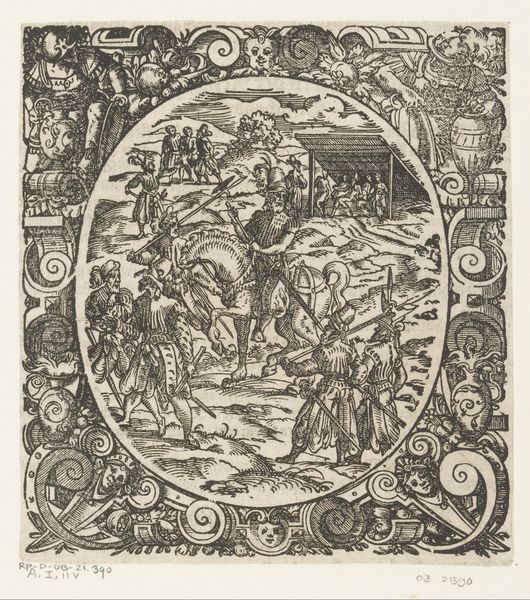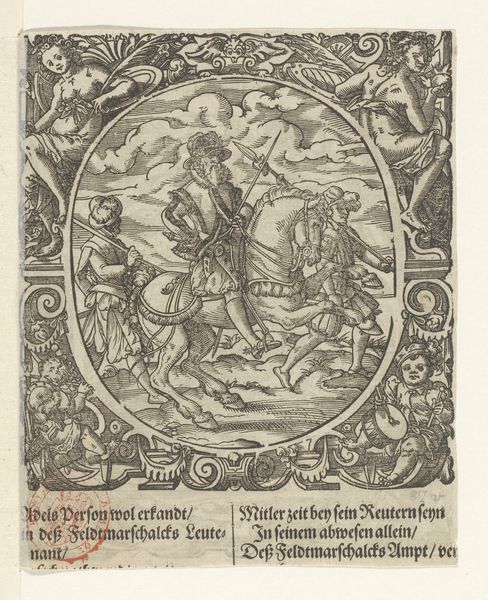
drawing, graphic-art, print, engraving
#
drawing
#
graphic-art
#
pen drawing
# print
#
pen illustration
#
pen sketch
#
northern-renaissance
#
engraving
Dimensions: height 145 mm, width 130 mm, height 116 mm, width 97 mm
Copyright: Rijks Museum: Open Domain
Curator: Here we have a fascinating print titled "Houthakker," created by Jost Amman in 1573. It's part of the Rijksmuseum's collection. Editor: My first thought is…intricate. Look at all that detail packed into such a small space. It almost feels claustrophobic, yet dynamic, with all the activity swirling around the central figure. Curator: Indeed. Amman was a master of the "kunstbüchlein" or "little art book," catering to a rising urban literate population hungry for images that reflected their world. These weren't just decorative; they served as social commentaries, encyclopedias of trades, even pattern books for artisans. Editor: That makes sense. You can almost feel the weight of the axe on his shoulder, and the way he's posed mid-stride suggests constant labor, movement, the sweat of work in his time. But this isn’t just a portrait; there are the cannon and what look like army tents. How does the image of the working class relate to military might here? Curator: Excellent question. The 'Houthakker' or 'Woodcutter' also carried another meaning. Looking at the caption ‘Der Schneller’, which means quick cutter or looter, you can see that this image presents an interesting contrast. Perhaps Amman alludes to the blurred lines between work and plunder in an age of constant warfare and social unrest. It certainly prompts reflection on who benefits from whose labor. Editor: Notice the border too? All those grotesque figures seem to be a strange addition, creating a dark humour while surrounding this central woodcutter. The production must have been a collaboration too; was he involved in the engraving of his designs or did he create drawings? Curator: Amman likely created the drawing which was then transferred to a metal plate by a formschneider. The printing process enabled the widespread circulation of Amman’s designs to artisans in other urban centers. This reveals much about production strategies and workshop dynamics within printmaking during the Northern Renaissance. Editor: So this is less about the individual artistic genius and more about the entire workshop operating as a networked practice dependent on artisanal skill? That certainly adds depth to it. Curator: Exactly! The circulation and interpretation of this piece across early modern Europe undoubtedly would have spurred dialogues and actions we can only now begin to speculate on. Editor: Thinking about the sheer number of these prints, produced through labor, is amazing. So much effort. Curator: It offers a rich, complex story about the intersection of labor, war, and visual culture in the 16th century. Editor: I'm left pondering just how this one woodcutter, immortalized in ink, managed to encapsulate a society in motion.
Comments
No comments
Be the first to comment and join the conversation on the ultimate creative platform.
